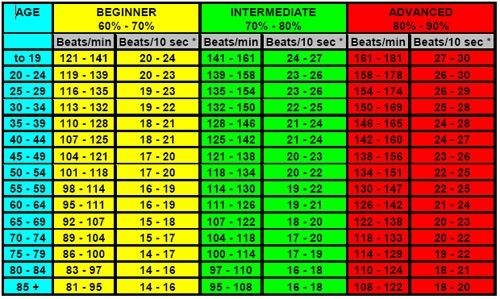
Keep your run exciting with target heart rate zones
You’ve got a fresh pair of running shoes, your running buddy by your side, and a running app to keep you on steady pace. You've made the plunge and started running, and now it’s become a full-fledged part of your routine.
Congratulations on getting through the hard part! The best way to keep this habit going is to make sure it doesn’t get boring, so find new ways to challenge yourself. If signing up for a marathon isn’t your cup of tea, try competing with yourself using target heart rate zones.
Using physio-thinking and exercise physiology principles, you can ramp up your interval training and start using your heart rate to guide your workouts. Figure out your training target heart rate zone and monitor how long it takes you to reach it, how hard/fast you have to run to get there, and how long recovery takes.
How to take your heart rate
Getting a heart rate reading on yourself requires no more than your own hands and a little bit of math (if you’re looking for ease/precision, a simple heart rate monitor, fitness tracker, or smart watch can do the trick).
Just don’t use your thumb to take your pulse (it has a strong pulse of its own) and don’t press too firmly.
You have two easy options for getting your heart rate:
- At your wrist – feel with your pointer and middle finger on the inside of your wrist (on the thumb side of the string-like tendons on the middle of your wrist crease; see below)
- At your neck – use your pointer and middle finger to feel straight below your ear lobe, under your jaw line
Once you feel the distinct *thud thud* against your fingers, count how many beats you feel in 10-seconds. Multiply the number of beats you counted by 6 (using mental math or – since it’s 2018 – use your phone’s calculator) and you’ve got your heart rate in beats per minute (bpm).

Getting to your target heart rate zones
Figuring out your target heart rate zone involves a bit of math, or you can use the chart below. First, figure out what your age-predicted maximal heart rate (max HR) is. Do this by subtracting your age from 220 (220 – age = max HR).
Then, you’ll need to set a target moderate intensity heart rate zone and a high(er) intensity zone. It may be useful to consult with your healthcare provider (and/or your local Lifemark physiotherapist) on this to ensure you’re fit for it, but you can still get a good approximation yourself.
Consider starting with a 75-78% max HR moderate intensity zone and an 85-88% max HR high(er) intensity zone. To calculate these, determine what 75%, 78%, 85%, and 88% of your max HR is (max HR x 0.75, max HR x 0.78, so on) or using the chart below as a guide.

With your defined moderate and high intensity zones set, your workout can change from walk-run intervals to a moderate-high intensity run intervals. You can vary the durations from longer moderate intensity to longer higher intensity over time.
Applying this technique, you can steadily increase the distance and duration of your runs. You may have started running 2-3 km regularly, but now you can push up to 5-10 km distance multiple times per week.
Running can be much more enjoyable as you continue to compete with yourself, challenging yourself to get into your target zones faster, stay in them longer, and recover from high to moderate intensity zones more quickly. You’ll be running with a purpose, and trust us, it’s fun!






